Explore the best places
Monuments in Guimarães
Padrão do Salado
- heritage
Largo da Oliveira
4800-438, Guimarães
Built in the reign of Dom Afonso IV, it was intended to commemorate the Battle of 1340. The porch consists of four carved broken arches, based on columns with carved capitals, topped by the Royal shield. Here is a cross that represents Christ Crucified on one side and the Virgin Mother under a canopy on the other.
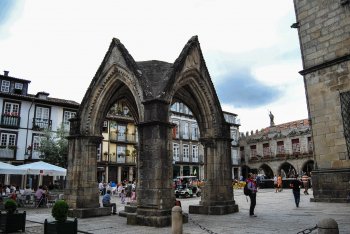
Paço dos Duques de Bragança
- heritage
Rua Conde Dom Henrique
4800-412, Guimarães
15th century monument built by Dom Afonso, Count of Barcelos. Large building, with four bodies that surround an interior courtyard with a rectangular plan. This construction occupied the place of the old palace of the Leonese kings. Much changed over the centuries, it was recently restored. Noteworthy are the Gothic chapel portal, the "lost steps" and the banquet hall. It has a museum where the four copies of Pastrana tapestries, which narrate some steps of the conquests in Africa, the core of Flemish tapestries, Portuguese furniture from the post-discovery period and also porcelain and weapons from the 15th to the …

Santuário da Penha
- heritage
Penha
4810-038, Penha
Sanctuary consisting of a church, several chapels and dotted with several natural cavities, which were formerly shelters. It was built in 1946, after a fire in 1939 destroyed the original Santuario Eucarístico da Penha.
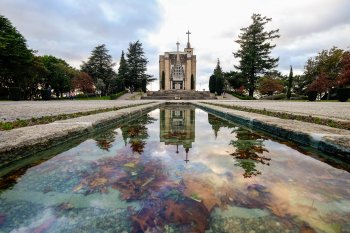
Convento de Santa Clara
- heritage
Largo Cónego José Maria Gomes
4804-534, Guimarães
Founded in the 16th century by Baltasar de Andrade, this was one of the richest convents in the city. The convent of Santa Clara stands out thanks to its symmetric facade, divided in three and the portico has an image of the Patron Saint. It has a spacious courtyard and an impressive two-storey cloister. Currently, the City Hall is here and a part of the building houses the Municipal Archive.
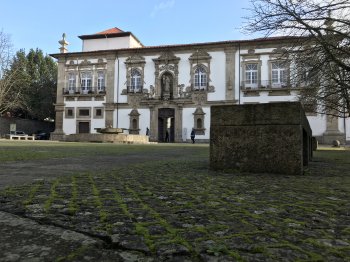
Paço de São Cipriano
- heritage
Rua de São Cipriano
4835-461, Tabuadelo
It was built in 1415, this building suffered profound transformations through the centuries. The two floors house involves a medieval tower with crenels. Apart from the main building there is a chapel in honour of Santo António built in the 18th century.

Palácio de Vila Flor / Centro Cultural Vila Flor
- heritage
Avenida Dom Afonso Henriques, 701
4810-431, Guimarães
Palace built in the mid-17th century, with a beautiful garden in three terraces decorated with a Baroque fountain. Highlighting the granite statues representing the first Kings of Portugal. In 2005, suffered and restoration works it was added a building where work currently the Centro Cultural Vila Flor. The Palace houses several meeting rooms with temporary exhibitions and the Cultural Centre has two auditoriums for concerts, a concert café and a restaurant.
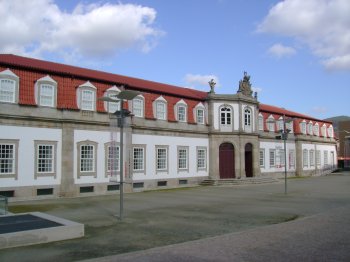
Fornos de Olaria da Cruz de Pedra
- heritage
Rua das Lameiras
4805-064, Guimarães
Mixed housing and structures workshop, where several generations of potters already manufactured dishwasher matte red until the beginning of the last quarter of the 20th century.
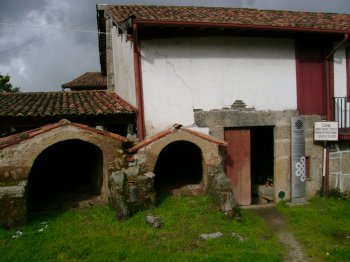
Moinho de Donim
- heritage
Rua Doutor João Antunes Guimarães
4805-181, Outinho
Grain milling mill moved with the force of water.
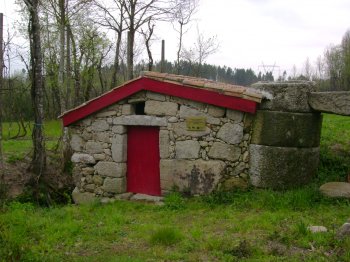
Moinho de São João
- heritage
Jugueiros
4810, Jugueiros
A recently recovered water mill in the banks of the Vizela river.
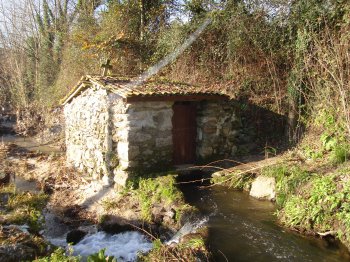
Muralhas de Guimarães
- heritage
Avenida Alberto Sampaio
4810-250, Guimarães
The high part of Guimarães was the first to approach the wall; it was probably during the Kingdom of D. Dinis. From this wall that is extended through around two thousand metres, it only survived an extensive chunk and from the eight towers that were distributed thought the wall, there is still one on the Vila Door. This wall construction started in Dom Afonso III Kingdom and finished during Dom Dinis Kingdom. This wall used to connect the Castle town to Santa Maria town, on the lower part.
